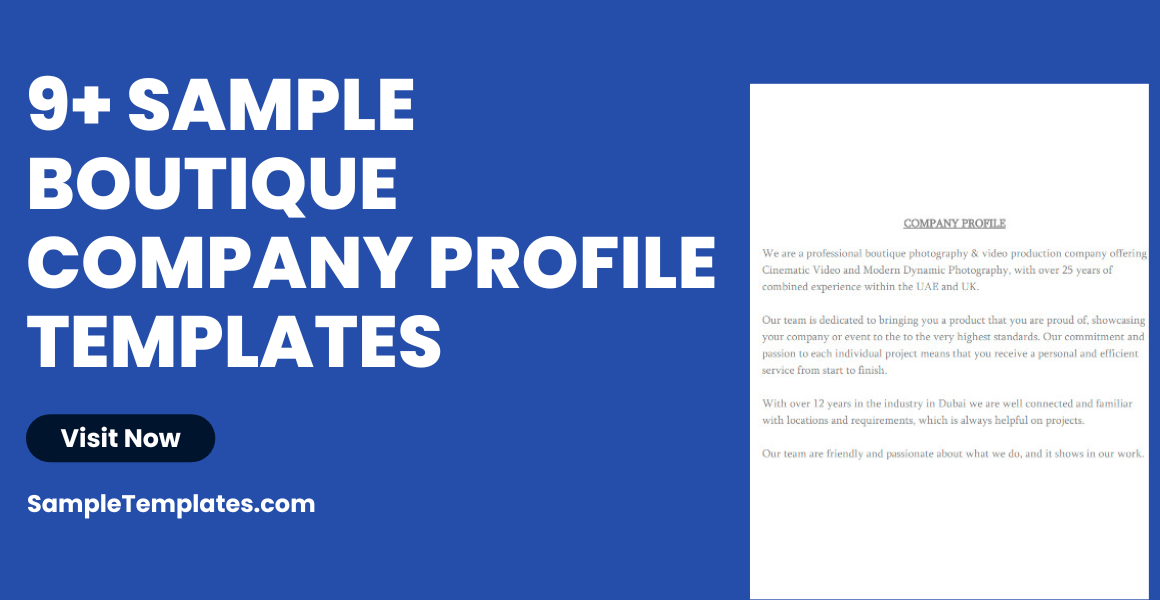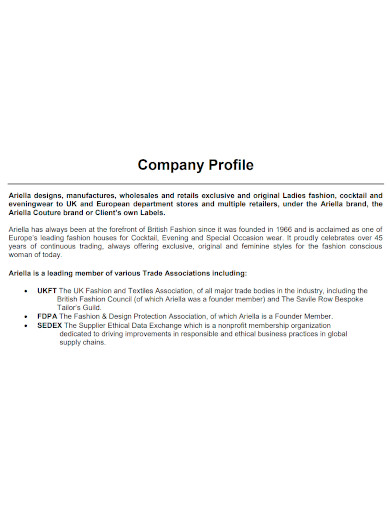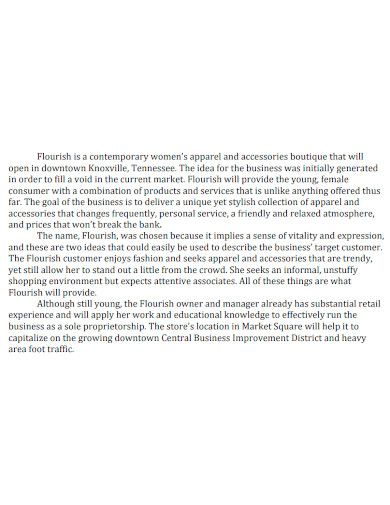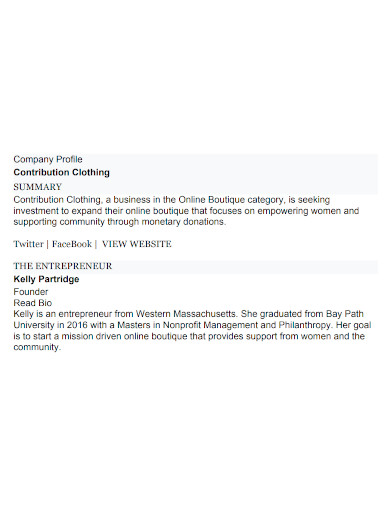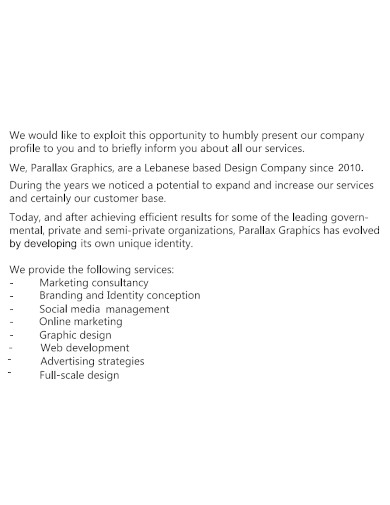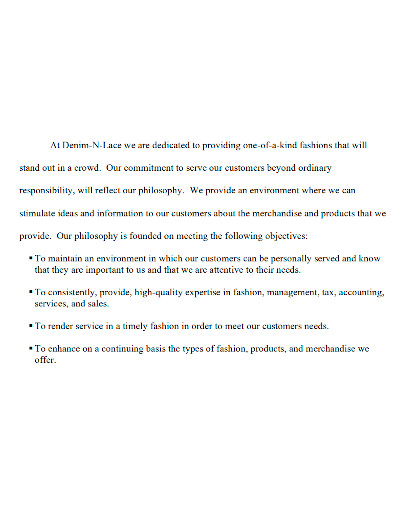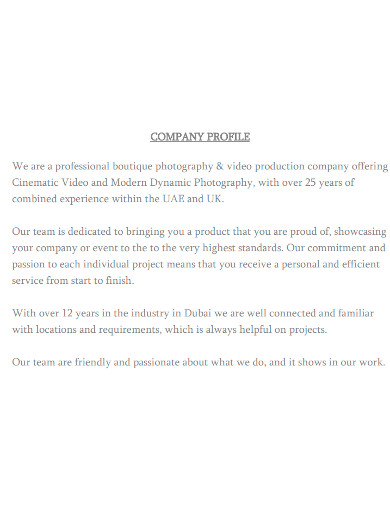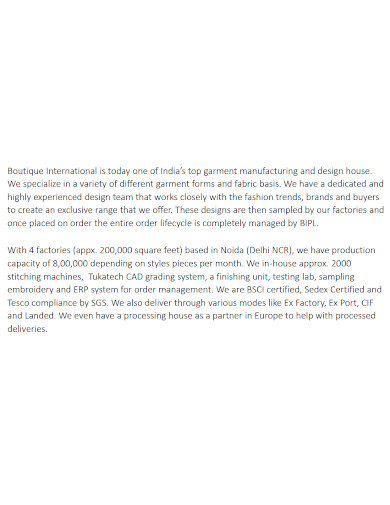When it comes to shopping, most people, especially women, hit the boutiques in malls and shopping centers. Shopping for clothes is much more exciting when hitting the boutiques to buy new and trendy stylish clothes. Since the fashion industry is a billion-dollar industry, boutiques are everywhere and there are a wide variety of boutiques that cater to anyone’s interests and needs. Since there are so many boutiques, it might be hard for some owners to differentiate their stores from their competitors. Well, they don’t need to worry about that, by creating a company profile, will help establish their niche and share their company details to everyone and increase their number of customers. Read the article to find out how to create a boutique company profile.
9+ Boutique Company Profile Samples
1. Boutique Company Profile Sample
2. Boutique Company Profile Format
3. Accessories Boutique Company Profile
4. Online Boutique Company Profile
5. Fashion Boutique Company Profile
6. Strategic Boutique Company Profile
7. Printable Boutique Company Profile
8. Creative Boutique Company Profile
9. Standard Boutique Company Profile
10. Editable Boutique Company Profile
What is a Boutique?
A boutique is a small shop that sells stylish and luxury clothing and jewellery. The term “boutique” is a French word which literraly means store. Boutiques are usually privately-owned by individuals and their products solely specialized in clothes, jewellery, and shoes and these are sold in higher prices compared to the clothes being sold in mass market shops.
Boutiques have small spaces in their store so they only have limited products to display. Boutiques stores have a niche market. Affluent people love to shop in boutiques since it offers a personal experience in shopping; they are personally assisted in their queiries and cloth fitting. Most boutiques are located in malls, hotels, airports, or outlet stores.
Types of Boutiques
There are different kinds of boutiques that exist around the globe. The following below are the common types of boutinques that you usually find:
- High end and high street fashion boutiques: These are the luxurious boutiques of expensive brands. These brands have good quality clothes and are sold at high prices.
- Designer boutiques: These types of boutiques are by lesser known designers and the clothes they sell come straight from the designers themselves. The great thing about these clothes are they are in great quality but can be bought at a reasonable price.
- Fast fashion boutiques: These are affordable clothes that has similar style to high fashion brands but they are lower in quality. These boutiques usually target the general public.
- Sports clothing and athleisure clothing stores: As the name suggests, this type of boutique only sells athletic clothing and is geared to athletes and fitness enthusiasts.
- Lingerie boutique: This boutique only specializes in selling underwear. This is especially geared to women.
- Maternity and baby stores: The target for this boutique are pregnant women who need comfortable clothes and mothers with infants who need clothes and accessories.
- Kids clothing boutiques: The clothes being sold here only caters to children.
- Formal dresses, gowns, and suits boutique: This type of boutique sells clothes that can be used in special events such as galas, weddings, balls, or ceremonies.
- Accessories boutiques: These boutiques only sells certain type of accessories such as bags, scarves, gloves, shoes.
How to Make a Company Profile
By now, you as a boutique owner must have a company profile available for your store. However, if you don’t, here is a guide how to write one:
1. Company Purpose
The first thing you need to put in your profile is to state your purpose and establish your niche. What pushed you to open a boutique? Which specific market are you targetting to? What specific of style do you serve to your target audience that will serve as your niche? Make sure you explain your purpose clearly and concisely.
2. Mission Statement
Next, is to form your mission statement. Your mission statement is important since it explains your values, goals, and qualities you have that make you stand out from your competitors and establish your own identity.
3. Company Background
Your background must summarize the development of your store; and all the highlights that happened in all the years your store has achieved up until the present. You can explain how you improve your company or made some improvements. Present these events in chronological order.
4. Contact Information
At the end of your company profile is your contact information. Include your address, telephone number, email, website, and other social media accounts that you have. To present your contact information, be sure to write it in a statement that will call to action. This will help encourage anyone reading your company profile to check youe peoducts in your boutique.
FAQs
How much is needed to open a boutique?
The cost of opening a clothing store be anywhere arounf $50,0000 to $200,000. However, the exact expenses will vary by location, facilities, and products.
Where do boutique owners get their clothes?
Boutique owners have several sources of where they obtain their clothes. They get clothes from online or offline wholesalers, trade catalogs, fashion shows and conferences, and sourcing agents.
What kind of schooling do you need for a boutique owner do?
It’s preferrred that a boutique owner must have a degree in business management or fashion marketing. Having a master’s degree is even better to attract more investors for the boutique owner to partner with.
Before publishing your company profile, make sure that the format you use reflects your brand. Be sure to provide pictures (or videos) of your boutique and the products that you sell. Don’t forget to proofread it for spelling and grammar errors. Have someone re-read the company profile you’ve written and let them suggest how you can improve it. To help you get started on making your own company profile, head over to our free sample company profile templates and start downloading now!
Related Posts
FREE 10+ Retail Agreement Samples
FREE 10+ Art Gallery Business Plan Samples
FREE 10+ Consultant Marketing Plan Samples
FREE 10+ Research Analyst Job Description Samples
FREE 8+ Retail Employee Handbook Samples
FREE 7+ Sample Job Appointment Letter Templates
FREE 6+ Sample Retail Sales Associate Job Description Templates
FREE 6+ Sample Business Recommendation Letter Templates
FREE 13+ Sample Feasibility Reports
FREE 10+ Food Truck Business Plan Templates
FREE 11+ Retail Risk Assessment Samples
FREE 9+ Retail Associate Job Description Samples
FREE 8+ Cashier Resume Samples
FREE 5+ Sample Sales Employment Agreement Templates
FREE How to Make a Receipt Using Microsoft MS Word?
